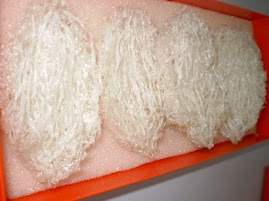Like it or not, believe it or not, dengue started with just one bite – one mosquito bite.
Dengue disease is transmitted and spread by mosquito vector named Aedes aegypti. They usually bite in the morning and early evening. They breed on clean water, usually in the stagnant water indoor and outdoor and it takes just a week to develop from an egg through larva, pupa and into an adult.
The clinical symptoms range from mild fevers to a severe and potentially life threatening haemorrhagic disease. If no medical cure given in time to the infected person, the illness could be lethal and may lead to death.
How to distinguish Aedes from other mosquitoes?
The hazardous female Aedes is a smallish, dark mosquito with conspicuous white markings and banded legs (please refer to the photo).

How to keep the Aedes at bay?
Currently, source reduction of the breeding habitats of the major mosquito vector is the best form of control.
In order to prevent breeding of mosquitoes, most ranchers put some salt in the water.
Some people claim that actually, in total darkness and without any sunlight no larva can survive. Moreover, the mosquitoes will become the swiftlets’ food and are not likely to breed in the BH.
Be that as it may, we still need to take necessary precautions to prevent breeding of the dreadful Aedes.

One of the best ways is to rear small fishes such as the guppies or aptly called mosquito fish (see the photo above). In an enclosed body of water, they devour mosquitoes. A single fish can eat hundreds of larvae a day.
Apart from this, BH owners should always stay alert, be considerate and take good care of the BH’s hygiene & cleanliness. It is advisable that during the outbreak, periodical inspections should be conducted to check for possible mosquito breeding ground inside and outside the BHs and ensure no rubbish blockage in the road side drain.
We would not want our BHs become the best shelter for mosquitoes, instead of swiftlets.

































I strongly agree with you and may I add that in all my BHs, I would prefer a buffer zone between the BH and the street. A pond outside the BH to filter the air and to cool the air as the air leave the BH where all dirt will fall into the pond and feed the fishes. adding green plants creating a peaceful sanctuary for the swiftlets and in the same time, creating wealth for me as I deserve it.
ReplyDeleteWestwing